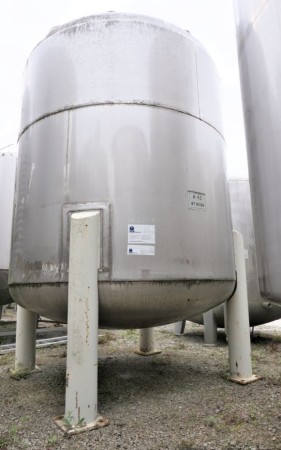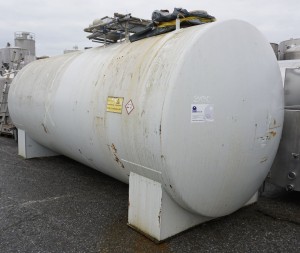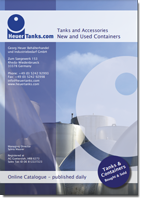Oil tank for chemicals/pharmaceuticals
Oil tank
Container 13.050 liters made of V2A, used, double-walled mit protection shell
Art.-Nr. M-1566
EUR 10.800,00
add. 19 % VAT excl. shipping costs
Behälter 13.050 Liter aus V2A, gebraucht, doppelwandig mit Leckschutzmantel
EUR 10.800,00
add. 19 % VAT excl. shipping costs
Container 15.000 liters made of Steel, double-walled, used
Art.-Nr. M-3130
EUR 4.500,00
add. 19 % VAT excl. shipping costs
Behälter 15.000 Liter aus Stahl, doppelwandig, gebraucht
EUR 4.500,00
add. 19 % VAT excl. shipping costs
Oil tank
Oil tanks can be seen in industry and agriculture as well as in private households. Every house that still uses oil heating generally has an oil tank in the cellar. In industry, we can differentiate between foodstuff oil and oils that aren’t foodstuffs.
Fuel oil tanks in private households
Private households that still use oil for heating will always have an oil tank. These oil tanks are suitable for storing fuel oil and come in various designs. There are tanks that are assembled on site, allowing them to be adapted to their place of use. These oil tanks are made of steel or plastic and are coated on the inside. So, they do not arrive at the customer pre-assembled. Tanks assembled on site are usually set up on a collecting basin so that escaping oil can ideally be caught if there are cracks or holes.
Small oil tanks and their usage
Battery tanks comprise several small oil tanks that have been combined into one large tank. Thanks to their double-walled plastic jacket, no collecting basin is required.
Underground tanks and their requirements
If a tank can’t fit into the cellar of a house, there’s the option of an underground tank. This type of oil tank consists of double-walled stainless steel or plastic and can be easily buried in the garden. However, underground tanks have to be monitored and checked regularly since they pose a greater risk of direct contact with the environment than oil tanks inside the house.
Oil tanks in industry and agriculture
Oil tanks in industry are mainly used for storing oils so that they can then be subsequently processed. These oils aren’t always fuel; they can also be oils for the food and cosmetics industries. For example, palm oil is a popular oil for cosmetics and is obtained from pulp of the fruit of oil palms. Before it’s processed, it’s stored in large oil tanks.
Rapeseed oil can be found in many kitchens today and is used a lot in cooking. Vegetable oil ages more quickly than mineral oil and should therefore be stored for no longer than nine months in a dark environment and be protected against the ingress of dirt and water.
In general, one-walled tanks are sufficient for vegetable oil. However, double-walled tanks are recommended for underground storage.
Oil tanks should be cleaned regularly, as otherwise the quality of the oil will be negatively affected due to various chemical reactions.









